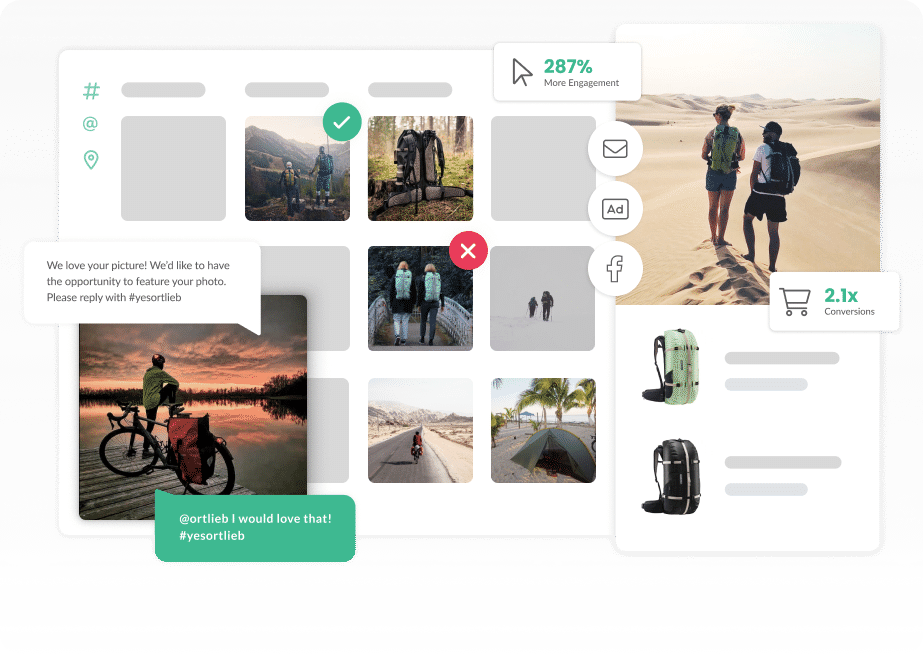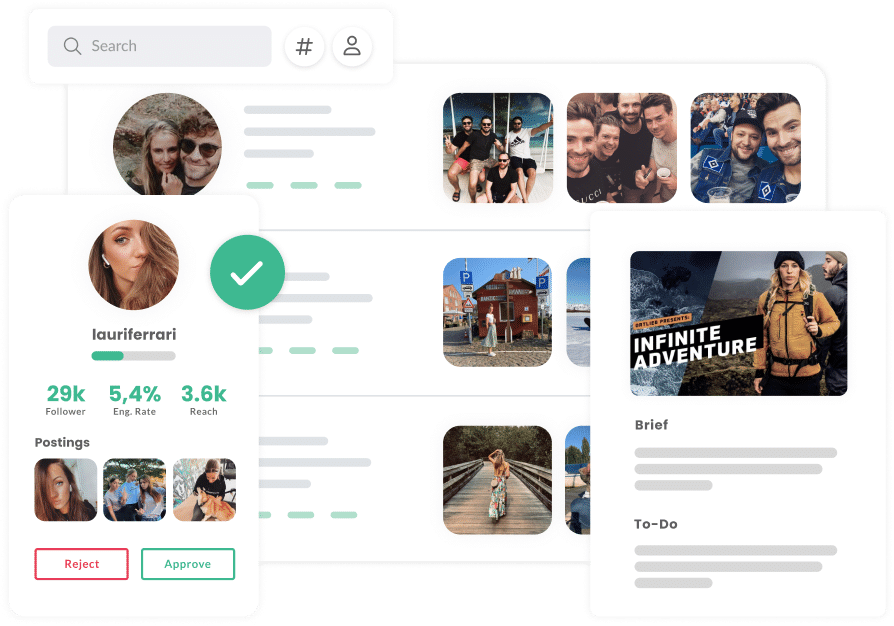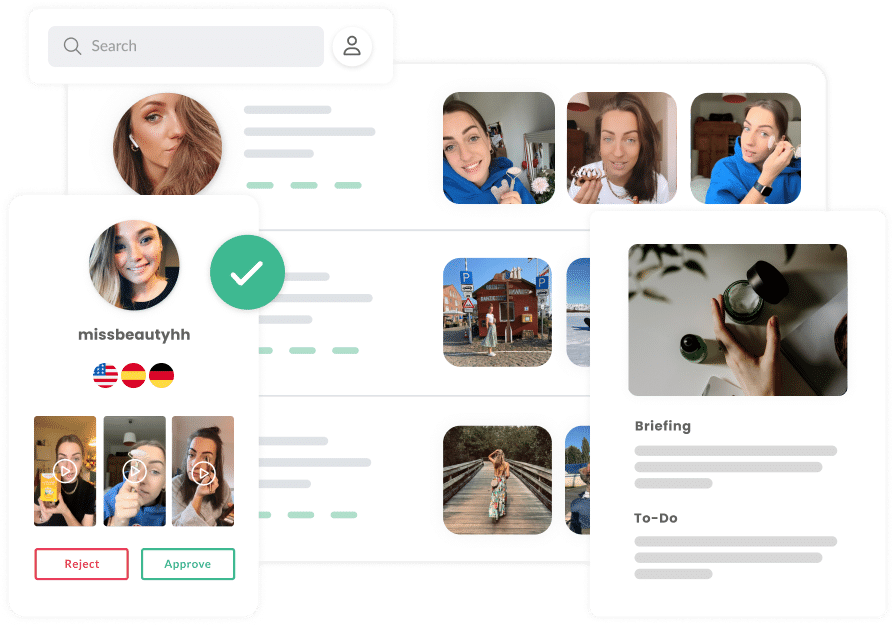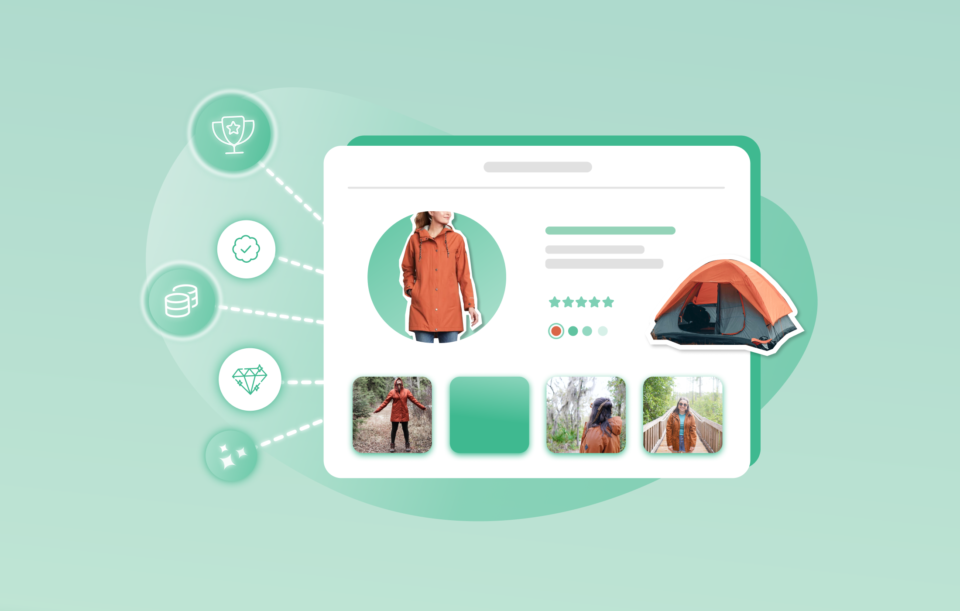Unfortunately, it’s a paradox: on the one hand, brands want and need to stand out from the crowd in order not to get lost in the endless expanse of competition. On the other hand, numerous brands advertise very similar products in their online stores with a lot of text and only rather cool and interchangeable images. This presentation is neither authentic nor personal to website visitors. Yet the solution is so close at hand: social media content from the community.
User-generated content (UGC) can be the perfect solution to the challenge of presenting products as attractively as possible on your product detail page. Through your community, you have the opportunity to obtain authentic and unique product images that cost you nothing compared to professional models. In this article, we will take a closer look at this visual social content and show you how it can be integrated into your website and the benefits it brings.
Visual Social Content on the Product Page – Briefing
There are various ways to integrate social media content into your marketing. User-generated content (UGC) is one of them. You can find out more about the function of UGC in our UGC Basic Guide. One option is to pepper the product detail page in your online store with images from your community and make it the flagship of your brand.
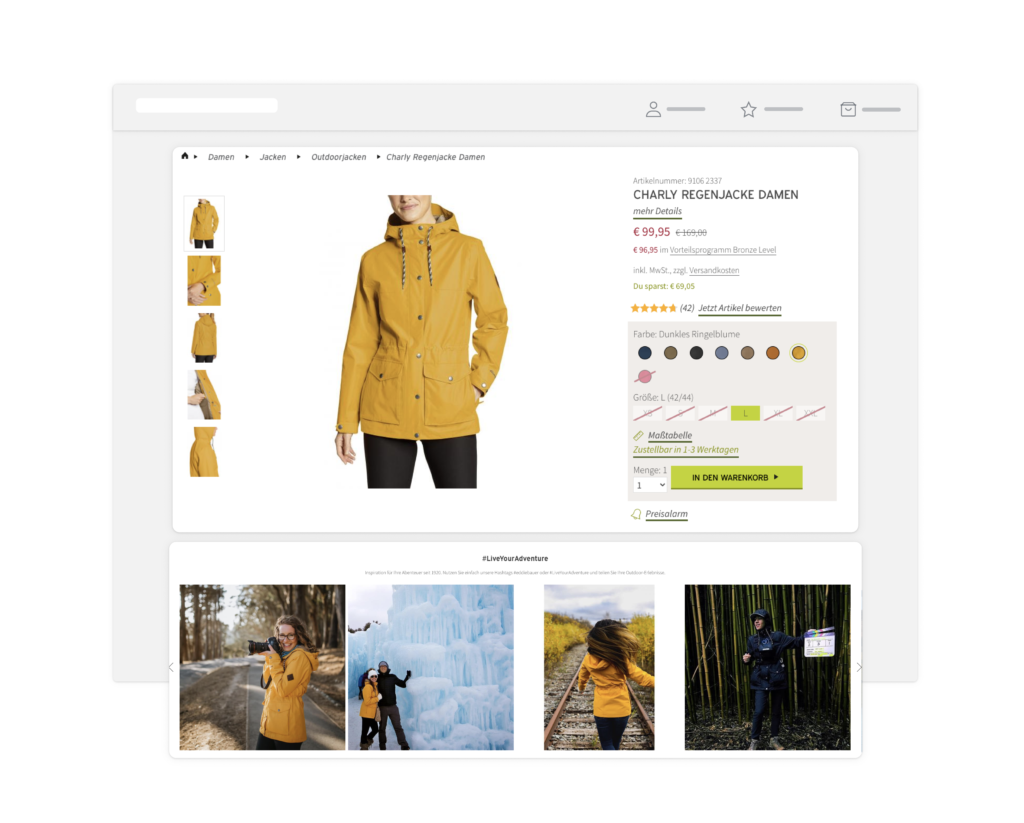
In this variant, a product stream is integrated as an element on the product page. This only plays social media content that shows the respective product. For example, there are additional images under the classic product image that show how your customers wear or use the product. You can find out how to technically integrate Instagram content on your website in our blog post on the topic. You can now read about the advantages of integrating product detail page images.
Why do Product Pages need Images from the Customer Community?
This blog post shows five reasons why it is worth enriching the view of the product detail page with social media content. To make sure this isn’t just a dull list, we compare the two clothing brands Eddie Bauer and Zara to illustrate this. If you want to find out more about why including social media content is better than using stock photos, take a look at our blog post about it.
#1 Product Detail Pages with authentic Images create a natural Aesthetic
The most important thing about wearable fashion is: How does the garment look on people? How does the product look in natural situations?
The fashion brand ZARA tends to rely on interesting product images to answer this question. Models wear the fashion while sitting bent over on a hotplate or hanging bent over a tennis net. This begs the question: to what extent does this reflect realistic and authentic situations in which the products would really be worn?
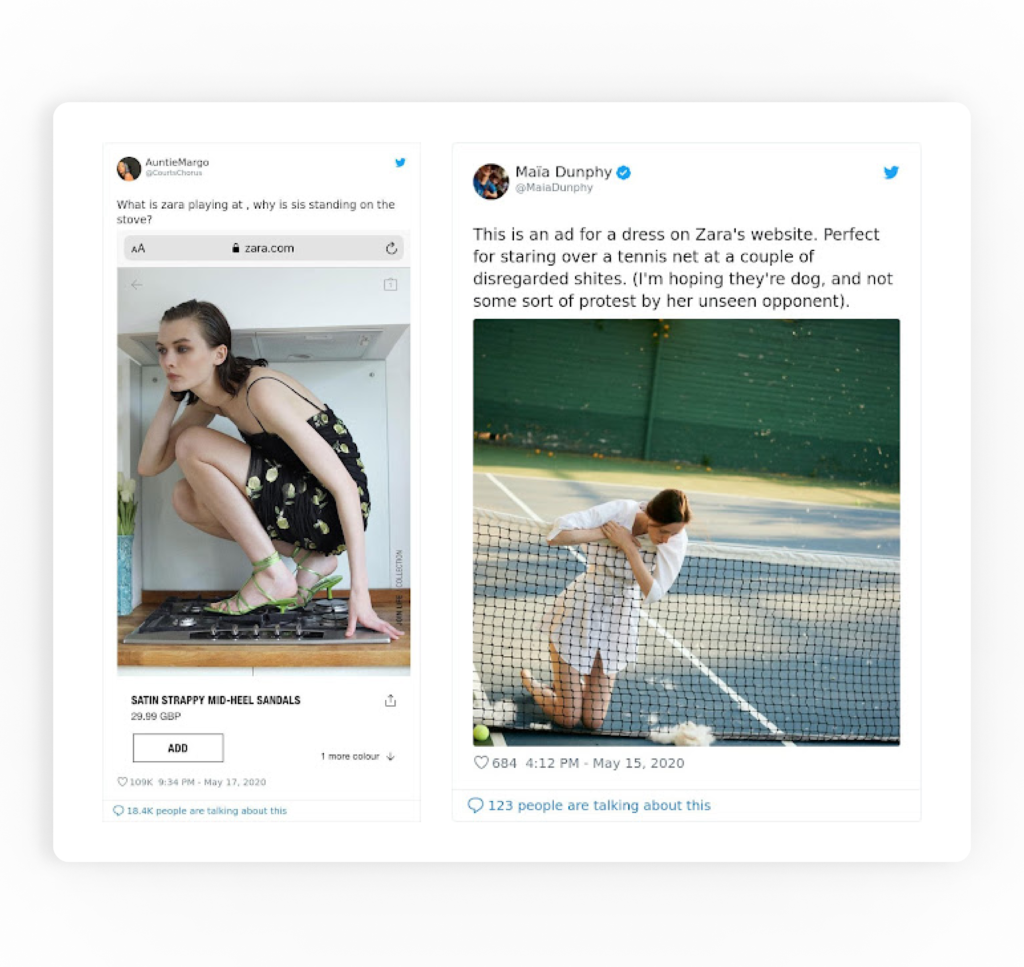
It is artistic in any case and that is certainly ZARA’s claim. However, the fashion illustrations have little to do with the world most people live in and only marginally contribute to the purchasing decision.
This contrasts with the content that the Eddie Bauer brand uses as a visual product description to emphasize the wearability and versatility of its clothing in everyday life. For example, the outdoor fashion company uses images from the community on the product detail page (PDP) to show how the same yellow raincoat can look on very different people in very different situations. In terms of function, this creates a natural aesthetic that does not look contrived, but is highly authentic.
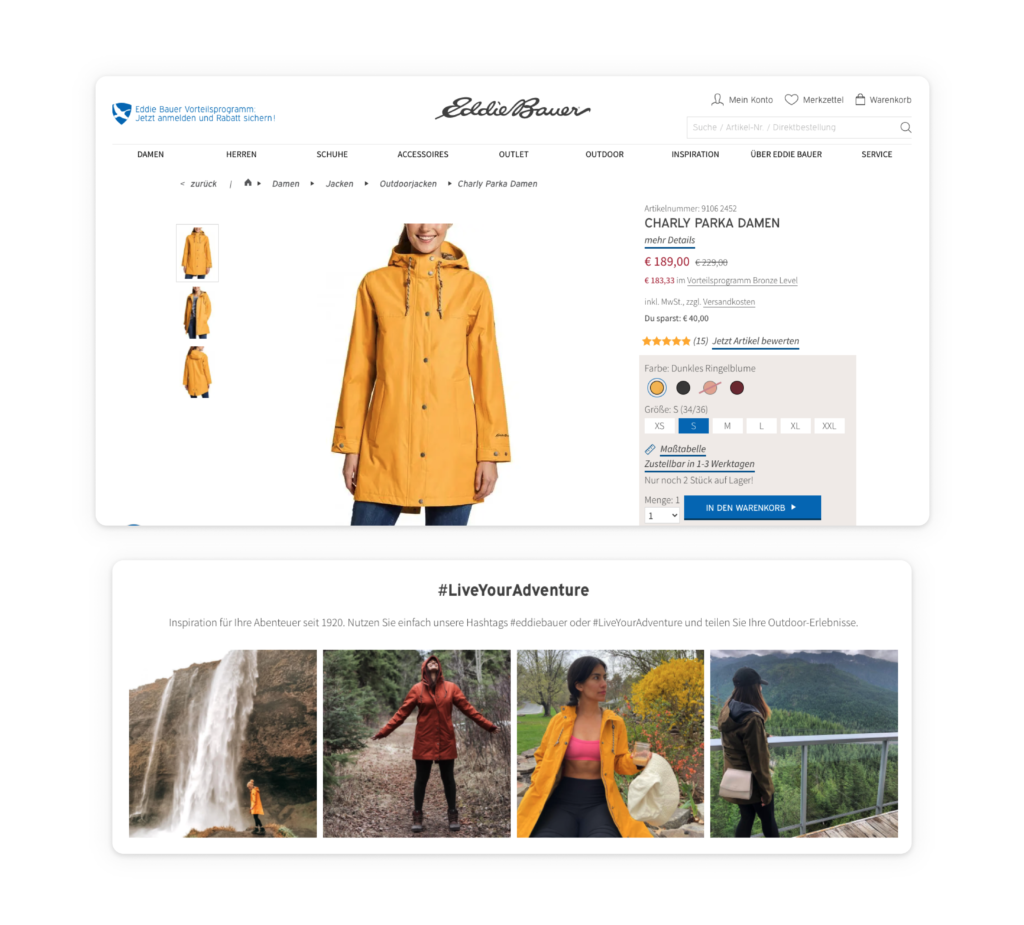
#2 Product Detail Pages with versatile Images create a larger Identification Area
Appealing, authentic, varied – that’s what users want product images on the product page.
Old-school product photos that show garments on slim, tall and almost flawless models as the main image certainly present the products in a good light and make them look excellent. However, such visual content production is long outdated, no longer in keeping with the times and does little to meet the needs of users. These product images do not reflect what the majority of buyers really look like, are not diverse and therefore offer little potential for identification.
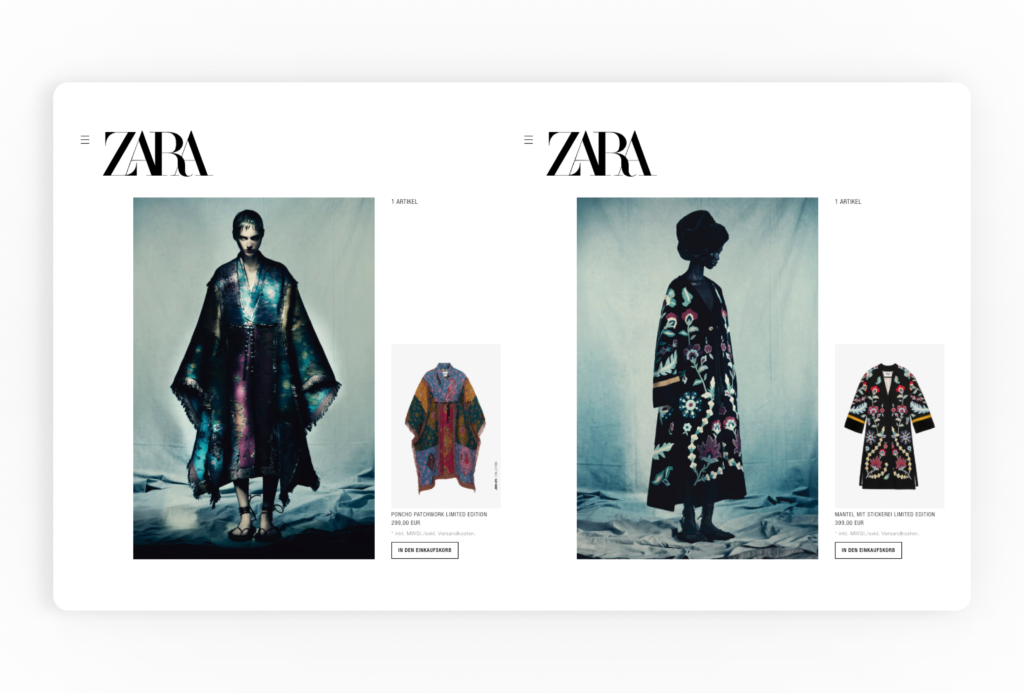
Social media content offers people inspiration and thus supports their imagination. Users can get an impression of what they themselves would look like with the product. True to the motto “a product that cannot be seen cannot be sold”.
Integrating images of your own customers on the product detail page not only provides social proof, but also shows how the specific product looks on different types of people with different hair colors, skin tones and body shapes. This provides a larger area for identification and shows different possible combinations of the garment. Eddie Bauer integrates product streams on the product detail pages to focus on the versatility of their products.
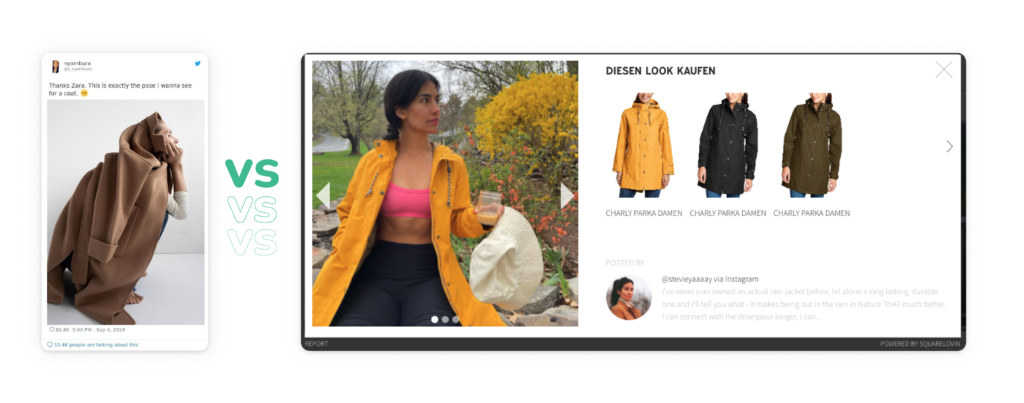
#3 Product Detail Pages with Visual Social Content paint a personal and individual Brand Image
Your own brand community is inevitably always unique, as it is made up of very different individuals. All these individuals have one thing in common: they are credible fans of your brand. Their images are not interchangeable, but highly unique. So if you use social media content from your community as a unique element on your product detail page, your brand’s online store will be unmistakable.
You give your products a face – the face of your community. Product images of actual purchases portray your online store and therefore your brand in a more tangible, individual and human way. Each new piece of social media content gives your online store an even more nuanced and personalized view and provides ever-growing inspiration. To see how social media content can be used to guarantee inspiration across all industries, take a look at our top 10 social walls of inspiration . Eddie Bauer also integrates inspiration into its online store in this way. The yellow raincoat mentioned above is an example of this:
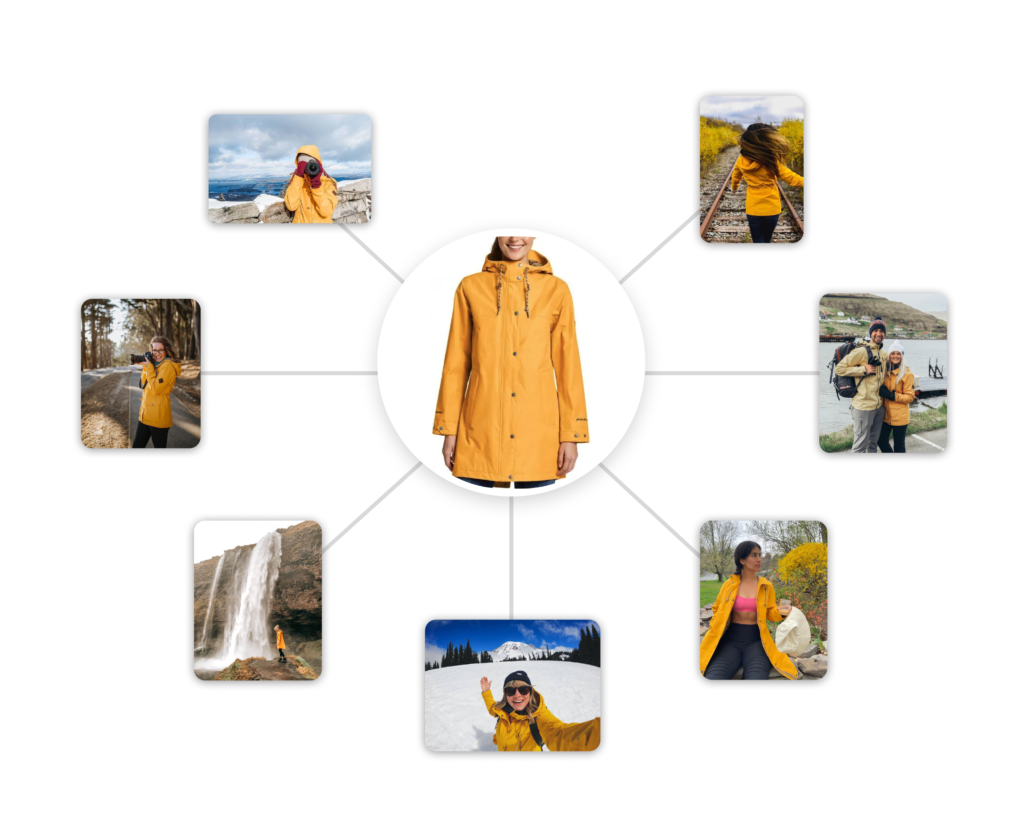
On the product page, the brand displays various UGC pieces, all of which show exactly this parka. The real people bring the outdoor jacket to life and make the product and brand appear multifaceted and authentic. By interacting with the community and focusing on users in marketing, brands can stand out from the crowd.
#4 Product detail pages with images from the community mean lower production costs
The presentation of artistically valuable product images such as ZARA’s has a price tag that should not be underestimated. This type of product shoot involves items such as model fees, location and post-production, making it a challenge for smaller brands to produce such product images.
Without high costs, Eddie Bauer can use social media content from the community to access a large number of images per product and highlight different facets. The images are an excellent reflection of the diversity of the company’s own customer base. This not only gives a versatile impression, but is also the cheapest way to present a large flood of authentic product images.
This diversity cannot be depicted even with many model shoots. For one thing, it is not possible to show such a broad cross-section of society. And secondly, the image production costs for each individual product would be disproportionately high.

Download our fact sheet now and learn how to optimize content production for your brand and reduce costs in no time.
#5 Product Detail Pages with inspiring Images boost Website Performance
Social media content widgets are a social commerce technique. They enhance the shopping experience with impressions from the everyday lives of other shoppers and thus boost your website performance.
Clicking on the respective image not only shows who posted the original content on social media and with which text, but also a direct link to the corresponding product with all product details. Another click takes the user to the product page in no time at all and they can add it to their shopping cart. This speeds up the customer journey, facilitates the purchasing process and minimizes the likelihood of abandoned purchases.
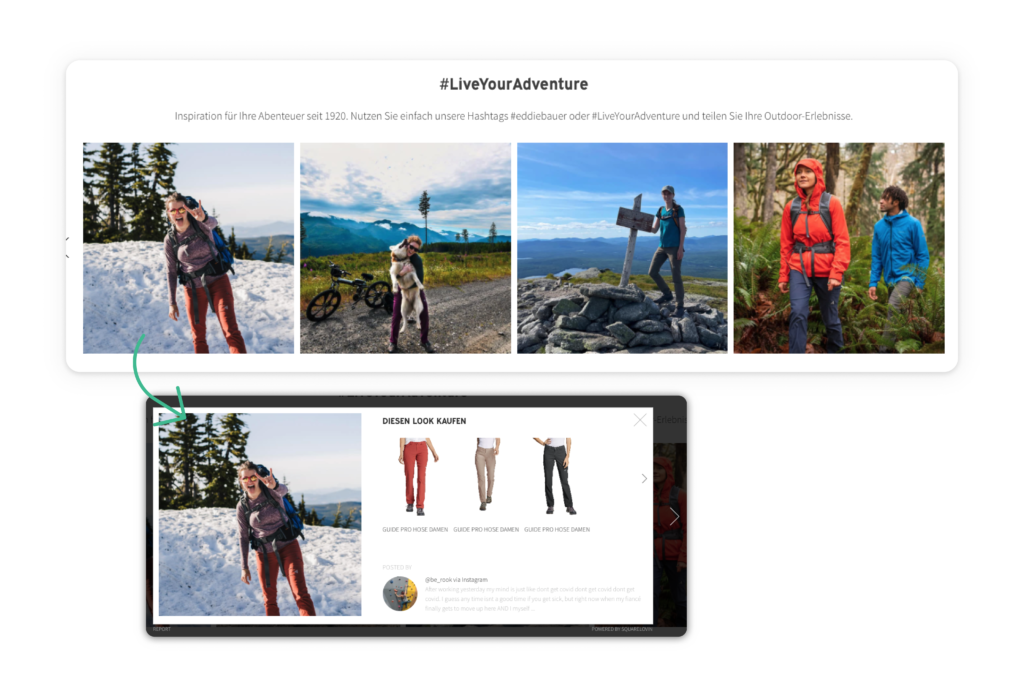
The integration of social media content in the online store provides inspiration and provides a large identification area. It also improves website performance and time on page. Product pages with authentic images encourage users to spend more time in your online store. This in turn has a positive effect on the findability of your domain via search engines. If you would like to know more about the most important KPIs in e-commerce, download our free whitepaper.
Conclusion
Of course, it should not be forgotten that it always depends on what you want to say with the product images. If your brand has a more artistic and abstract approach to the online store, the ZARA way will certainly fulfill this function. If, on the other hand, you want to focus on individual inspiration in the online store and on the authentic approachability of your brand, social media content is the better option.
Social media content is not interchangeable; on the contrary, it is highly unique. It portrays an immediately visible product description that a text element alone can hardly depict. It gives your brand an unmistakable face that people can identify with much more easily. Make conscious use of social media content to turn your product detail pages into a source of inspiration with authentic images that naturally persuade people to make a decision for your brand in a sea of competition.
If you’d like to learn more about how to provide online shop inspiration in your specific industry, feel free to read our detailed blog post on the topic.

